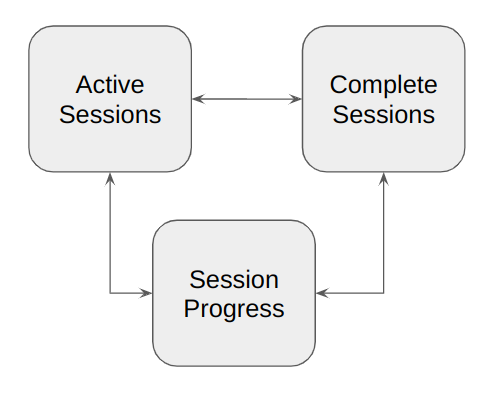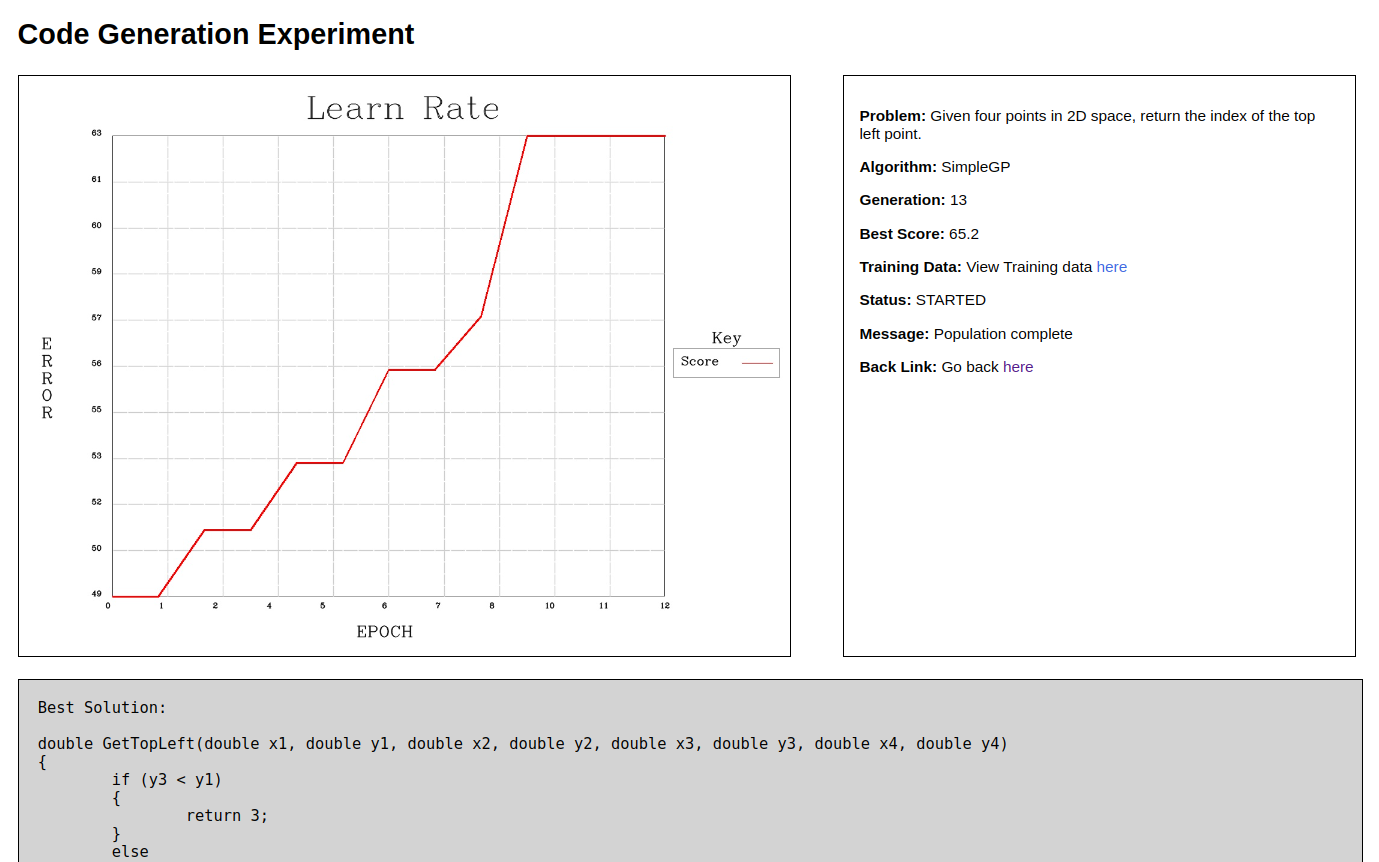A dashboard for tracking machine learning
CodeDash: My code AI code generation arena
Dash Link: CodeDash
NOTE: Unfortunately, this work is not valuable enough yet to be funded, therefore I am hosting a volatile home machine. Later, if I get the funding, I will move it to a more stable, secure environment.
This is a quick description of the CodeDash arena that I built. The main goal of CodeDash is to be able to host multiple machine learning tasks on multiple machines and be able to see the progress of each task in one central place. Ideally, with some independence of where I am located at the time (assuming internet availability). CodeDash also allows me to easily share the results of that learning process with others. For a reader of this blog, the utility of CodeDash could be as follows:
- Those that are super interested could come here and see what machine learning tasks are in progress. Maybe even place bets on which sessions will “converge” and which will fail.
- It could be a medium that I use to communicate the results of the various experiments that I have conducted.
- While I have not made the source code publicly available, the idea of CodeDash might appeal to you as a solution. If this is the case, let me know and I will try and make a public version of the source code available (warning it is written in C++).
Also, any feedback, or thoughts, please do not hesitate to contact me and tell me about them (trevorgeek@gmail.com).
CodeDash Layout

Figure 1: The site map for the CodeDash application.
The site map for the CodeDash application is relatively straightforward (for the moment). Currently, active sessions are shown on the Active Sessions page. Sessions that have finished (because they have succeeded, failed, or reached the epoch limit) are then available on the Complete Sessions page. As an administrator, I can “archive” sessions that I feel have no present relevance. There is a “Complete” button on the Active Sessions page and an “Active” button on the Complete Sessions page to allow a user to toggle between these two pages. Selecting a session then brings the user to the Session Progress page in which the progress of the session can be viewed.

Figure 2: An example of the list on the active sessions page.
The Session Progress page is shown below in Figure 3.
On the top left is a graph showing the progress of the model concerning fitting the solution. Currently, the “error” axis of this graph is the percentage of correct classifications of the training data, where 100% is the ultimate result. The “epoch” axis refers to the cycle of the learning algorithm. As I currently only have a Genetic Programming algorithm (SimpleGP) attached to the system, this “epoch” is the generation.
The top right region is a detail box that contains information about the problem, the algorithm, the state of the solution search, and a back button to return to the Active Sessions page.
The bottom box contains the best solution that the algorithm has found for the problem at hand. In the case of SimpleGP this is a C++ function that contains nested if statements that lead to return statements that return classifications.

Figure 3: A partial view of the Session Progress page.
Future Work
The next update that I have scheduled for CodeDash is around the notion of problem tracking. I want to add the capability to upload problems (in ARFF format), and track the performance of various algorithms around these problems. If you have any problems that you think could be suitable for testing, please let me know!
I am also in the process of building new learning algorithms to training against including:
- An expression tree based Genetic Programming algorithm for formula matching (plus I want to try using this approach for computer vision problems).
- Reinforcement Learning based Symbolic Regression.
- A simple Multi-Layer Perceptron Neural network, potentially using OpenCV.
I am also intending to keep this document updated as I make changes, so keep watching this space!